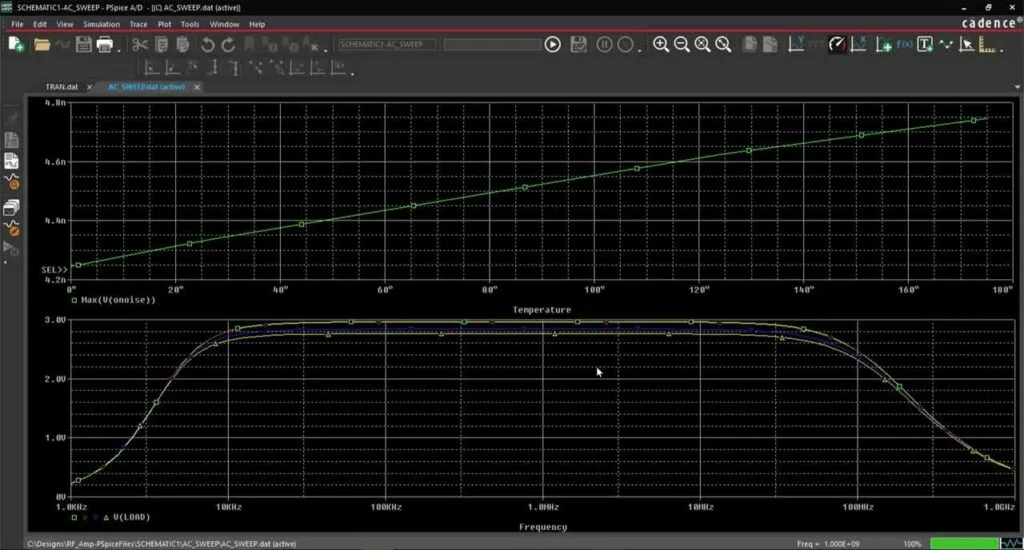Frequency Sweep, also known as Frequency Response Analysis, is a technique in electronics used to evaluate and characterize a circuit's response across a spectrum of different frequencies. This involves applying a varying frequency signal to a circuit and recording its response to identify frequency-dependent properties such as bandwidth, resonance frequencies, phase shift, and damping.
Frequency Sweep is a crucial technique in electronic design, troubleshooting, and circuit characterization. By performing this, engineers and electronics enthusiasts can achieve the following:
To perform a Frequency Sweep, functional signal generators, oscilloscopes, or frequency response analyzers can be used. By generating a sinusoidal wave signal with varying frequencies and analyzing the resulting response, a frequency response plot can be obtained, showing the circuit's reaction over the chosen frequency spectrum.
A sweep is usually performed on linear time-invariant circuits without applying any approximations in circuit behavior; nonlinear circuits can be explored using other advanced analyses (see below). Passive components are already defined in SPICE simulations, but you can also evaluate circuits with integrated circuits using verified component models in your simulator. The results from such an analysis can be utilized in the following ways:

Frequency Sweep offers several advantages, making it a valuable technique in electronic design and analysis:
Frequency Sweep is an invaluable technique in electronic design and analysis, unlocking the doors to a world of frequency-dependent properties. By engaging in this advanced dance with frequencies, we can achieve precise characterization of circuit response and fine-tune design to achieve optimal performance in various frequency ranges. Simultaneously, Frequency Sweep helps us identify and diagnose frequency-dependent issues, saving time and resources in the troubleshooting process.
When investigating how your circuits respond to different frequencies, integrate the best PCB design and analysis tools along with front-end design features with the powerful PSpice Simulator. You can easily perform sweep tests and simulate circuit behavior. Once your layout is created, a range of SI/PI analyses can be used to generate post-layout simulation results for comparison with your pre-layout simulations.